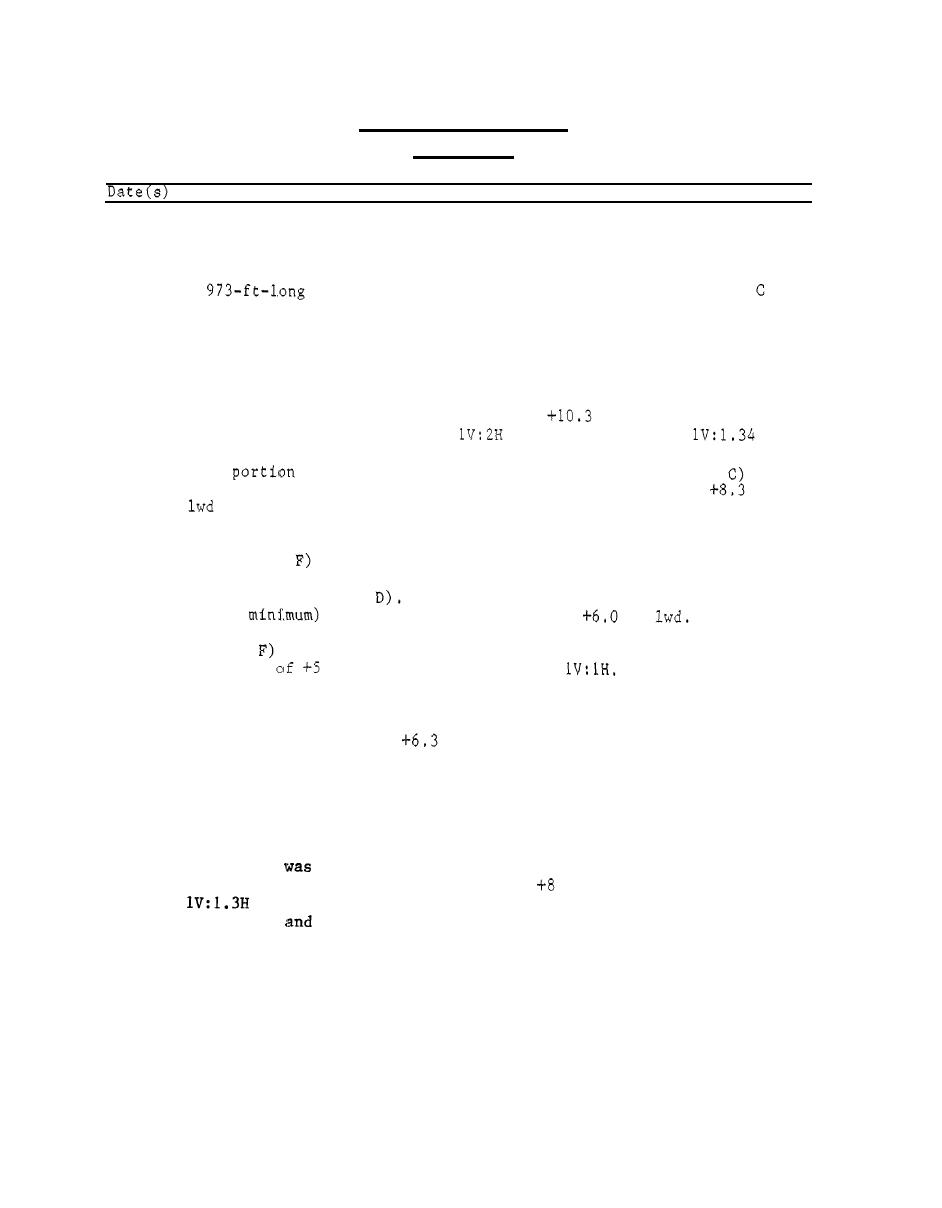
Table 80
Huron Harbor Structures
Huron, Ohio
Construction and Rehabilitation History
1827-
Construction of an 800-ft-long west pier (Figure 210, Section A) was
1831
completed. The pier was a 20-ft-wide stone-filled timber crib struc-
ture (Figure 211, Section A ) .
1891-
extension of the west pier (Figure 210, Sections and
A
1894
G) was completed. The extension consisted of a stone-filled timber
crib structure that ranged from 1 to 20 ft in width (Figure 211,
6
Section C.
)
1907-
Construction of a 1,450-ft-long rubble-mound east breakwater (Fig-
1908
ure 210, Section B) was completed during this time. The breakwater
had a crest width of 1 ft and an el of
0
ft lwd (Figure 212,
Section B.
)
on the lakeside and
on
Side slopes were
the harbor side. A concrete and stone superstructure was installed
on a
of the west pier (Figures 210 and 211, Section
also
during this period of time. The crest el of the pier was
.
ft
1914
A 280-ft-long shoreward extension of the west pier (Figure 210, Sec-
tions D and
was completed. The lakeward portion of the extension
involved woodpilings driven about 15 ft apart and filled with stone
The extension was capped with larger stone
(Figure 212, Section
(5-ton
and had a crest el of about
ft
The adja-
cent 160-ft-long shoreward portion of the extension (Figure 212,
Section
was a rubble-mound structure with a crest width of 5 ft
and an el
ft lwd. Side slopes were
1925
A concrete superstructure was installed on an 800-ft-long portion of
the west pier (Figures 210 and 211, Section A ) . The crest el of this
portion of the pier was
ft lwd.
1930
The shoreward rubble-mound portion of the west pier constructed in
1914 (Figures 210 and 212, Section F) was repaired and extended
shoreward an additional 110 ft.
1933-
A 1,360-ft-long rubble-mound extension of the west pier (Figure 210,
Section E)
1934
constructed during this period. The breakwater had a
crest width of about 8 ft and an el of
ft lwd. Side slopes were
)
not less than 50 percent being 5 tons or more, were
of 3 tons,
used.
1950
A 242-ft-long portion of the west pier was repaired by encasing it
with steel sheetpiling (Figures 210 and 211, Section C.
)
The voids
between the sheetpiling and the existing structure were filled with
(Continued)
316




 Previous Page
Previous Page
